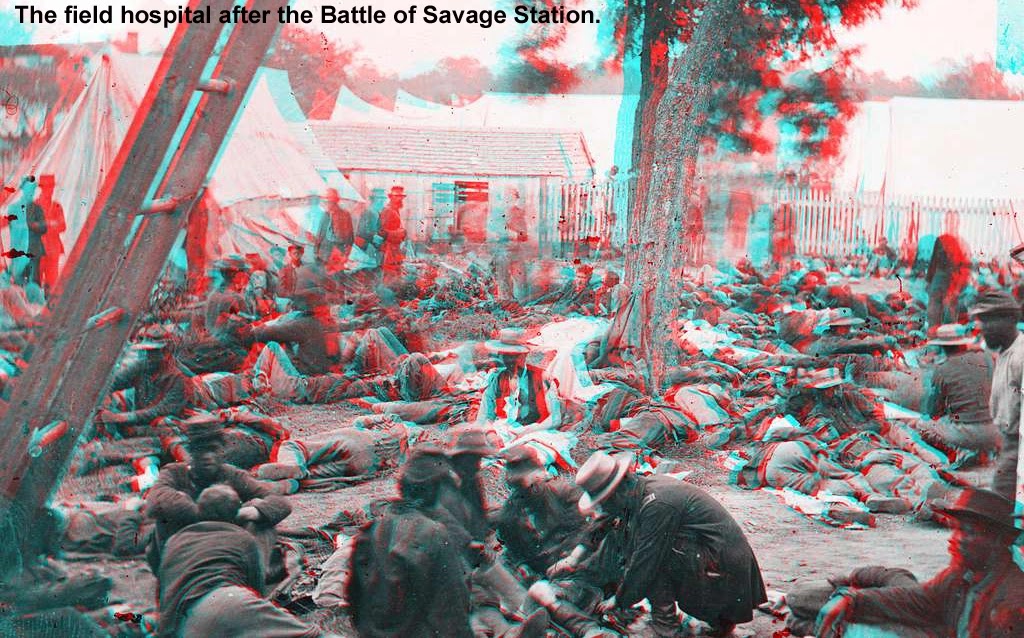
During the American, Civil War Soldiers Gave Themselves DIY Vaccines Trying to Avoid Smallpox
The Civil War's violent battles may have gotten the most attention for causing death, but the disease was the real threat. Among the many deadly viruses that killed more people than the war itself.
In the 1860s, before germ theory took hold in medicine, medical facilities frequently lacked the necessary hygiene to prevent infections. As a result, thousands of soldiers were killed by superficial infections and diseases now considered non-threatening or obsolete. Smallpox was possibly the deadliest and most feared of these.
Smallpox is a highly contagious and lethal infection caused by the variola virus, a member of the orthopoxvirus family, including cowpox, monkeypox, and camelpox.
The virus infects humans only and spreads primarily through inhaled respiratory droplets produced by sneezing, talking, or coughing. Smallpox settles in for a week or two inside its unwitting host, known as the incubation period before rashes appear all over the body, known as the eruptive stage. Over ten days, these raised, pus-filled rashes appear on the skin, giving it the appearance of bubble wrap.
By 1861, the Civil War began, the Western world vaccinated against smallpox for more than a half-century. This achievement is credited to Edward Jenner, an English scientist who demonstrated that infecting people with the less dangerous cowpox resulted in immunity to smallpox.
Edward Jenner invented vaccination in 1798. Cowpox serum was used to treat smallpox because cowpox is a closely related disease that causes resistance to smallpox. The vaccine, like inoculation, was administered through a series of tiny cuts in the skin, usually in the arm, because injections were not yet available. The cowpox virus was obtained from cowpox-infected animals, either naturally or intentionally.
Smallpox was one of many diseases that posed a challenge to medical personnel during the Civil War. Unlike most other diseases, doctors at the time had an effective method for preventing smallpox in armies through quarantine, vaccination, and the destruction of infected clothing and bedding. Because smallpox was contagious, most hospitals had a separate ward, if not a different hospital, where patients could be isolated.
Vaccination was difficult to obtain during the American Civil War, despite being highly desirable. Finding a cow or a suitable person with an active pustule that could be harvested to vaccinate others was difficult. Smallpox outbreaks were common on both sides, as were the deaths that resulted.
There was only one way to protect against the illness: inoculation. Using existing medical knowledge, doctors from both sides attempted to find healthy children to inoculate, which at the time meant taking a small amount of pus from a sick person and injecting it into a healthy person.
Many programs were set up in the Confederacy to ensure an adequate supply of vaccine scabs for the army. Every hospital had a medical officer to search the surrounding populace for children to propagate the virus. Ads were placed in local papers offering free vaccinations to children to allow the crusts to be harvested.
The inoculated children would get a mild case of smallpox and then be immune to it. Their scabs would then be used to create what doctors called a "pure vaccine," free of blood-borne diseases like syphilis and others that commonly afflicted soldiers.
But due to a lack of medical supplies, poor sanitary conditions, and a vast percentage of injured soldiers. Soldiers would try to self-inoculate by using the pus and scabs of their sick comrades. The method of delivery was gruesome. Soldiers were forced to perform vaccinations with whatever they could find because the doctor was either too busy or completely absent. They would cut themselves with pocket knives, clothespins, and even dirty nails to make a deep wound, usually in the arm. To the soldiers, the risk of contracting smallpox outweighed the risk of developing severe infections due to this treatment.
During these impromptu vaccinations, the soldiers were not careful to avoid other potentially dangerous patches of skin. They'd frequently get the contents of other lesions while getting the cowpox pus.
Soldiers were frequently infected by their fellow soldiers' diseases, particularly syphilis, during the transmission of lymph into the bloodstream as smallpox and syphilis share an unfortunate resemblance. This meant that untrained soldiers could easily confuse a syphilis pustule with a cowpox pustule. While attempting to develop immunity to smallpox, these soldiers spread syphilis throughout the unit.

0 Response to "During the American, Civil War Soldiers Gave Themselves DIY Vaccines Trying to Avoid Smallpox"
Post a Comment